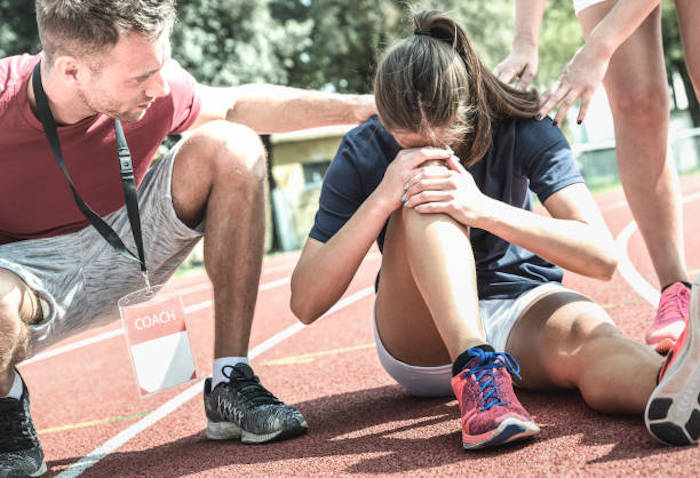
Sports and recreational activities cause more than 8.6 million injuries every year. You may be surprised to learn that the top two causes in people younger than 24 are general exercise and basketball. They’re followed by football, gymnastics, pedal cycling, and soccer.
Over the age of 25, however, injuries are primarily caused by recreational sports, water sports, basketball, and pedal cycling. Recreational sports include everything from racquet sports, golf, and bowling to hiking and fishing.
Start With a Sports Physical
Your team or school may already require a sports physical, but if you aren’t participating in competitive athletics, you should still consider scheduling a sports physical. The goal of a sports physical is to find any musculoskeletal or health issue that puts you at risk for an injury.
Your sports physical also provides information about deficits in strength, balance, and muscle coordination. Then you can prevent an injury by taking the steps needed to heal, rehabilitate, and strengthen your body.
Participate In a Conditioning Routine
If you’re involved in competitive sports, chances are you’re in a conditioning program. But many people who suffer a sports injury aren’t in the best condition to take on an intense activity and that’s when your risk of injury skyrockets.
A well-rounded physical conditioning program should include components to improve your strength, balance, coordination, and endurance. You can achieve all that and stay in a sports-ready condition with a good fitness program. Just don’t get so zealous about fitness training that you don’t take time to rest.
Always Take Time to Rest
Your muscles naturally develop micro tears when you exercise. Then they need time to rest and heal but don’t think of it as a waste of time. As muscles recover, they become stronger and increase in size.
Without adequate recovery time, however, the microscopic damage to muscle fibers gets worse. The tears expand and eventually, you have a painful, inflamed overuse injury. Your risk for an overuse injury is highest when you repeatedly engage in the same activity, your exercise is rigorous, or you suddenly ramp up your training time.
Unfortunately, there aren’t any hard-and-fast rules about how much rest you need. Your optimal rest time depends on your overall fitness level and the type of activity. If you have any questions, call our physical medicine experts, and they can help.
Routine Warmups Are Not Negotiable
The temperature of your muscles affects their function. When they’re cold, they easily tear with only a minimal amount of stress.
When you warm up, you prepare your body for the demands of exercise and raise your muscle temperature, which helps prevent injuries and improves your performance. Your warm-up should include aerobic activity (start slowly and keep the pace easy) and stretch (after your muscles warm up).
Follow Proper Technique
Every activity, from walking to football, has a proper technique to follow. When you engage in physical activities, there’s a proper way to move that prevents injuries by supporting your body’s natural mechanics. The excellent technique reduces excessive stress on your joints or on one specific group of muscles.
Use The Correct Equipment
You’re familiar with sports that have an obvious need for protective equipment, such as helmets and padding when playing football. But virtually every sport needs the right equipment. Even if your primary sport is walking, you need supportive shoes that prevent foot, ankle, and knee injuries.
If you’re a weekend warrior, you’re at a higher risk. When was the last time everyone donned helmets when your family and friends got together for a friendly game of backyard football? Beyond a spontaneous pick-up game, however, you should still be prepared for your favorite activities with basic protective equipment, including helmets, eyewear, and knee pads.
Precision Pain Care and Rehabilitation has two convenient locations in Richmond Hill – Queens and New Hyde Park – Long Island. Call the Queens office at (718) 215-1888, or (516) 419-4480 for the Long Island office, to arrange an appointment with our Interventional Pain Management Specialist, Dr. Jeffrey Chacko.













